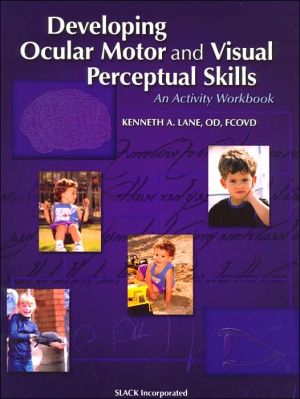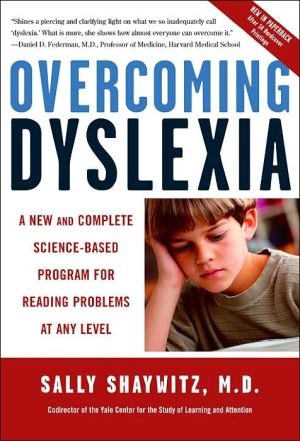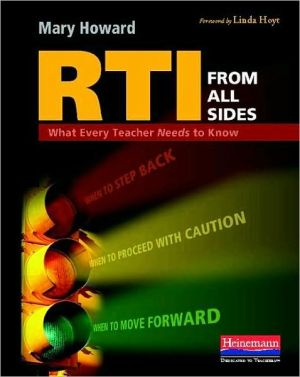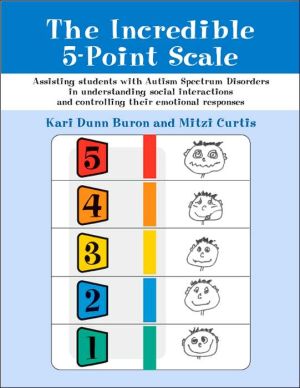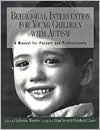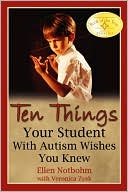Developing Ocular Motor and Visual Perceptual Skills: An Activity Workbook
With over 20 years of experience, Dr. Kenneth A. Lane has designed Developing Ocular Motor and Visual Perceptual Skills: An Activity Workbook to help occupational therapists, optometrists, and other professionals who work with learning disabled children to develop ocular motor and visual perceptual skills. To establish a framework for understanding, each chapter begins with the scientific theories used to develop the activities. The easy-to-follow activities are then presented, along with...
Search in google:
Children with underdeveloped ocular motor and visual perception skills are likely to have problems in reading or learning to read. Writing for occupational therapists, optometrists, and other professionals, developmental optometrist and consultant Lane gives the theories on sequencing, dual vision processing, cerebullum- vestibular, conception of space and eye movements behind the activities he proposes. He describes the complexities of reading and the eye functions necessary to read, followed by activities for ocular motor, gross motor, visual motor perception, visual memory, laterality, and reversals skills. He also gives examples of daily lesson plans, a glossary of terms, a questionnaire, and a list of references. Annotation ©2004 Book News, Inc., Portland, OR
Contents Dedication Acknowledgments Preface Chapter 1: How to Use This Book Chapter 2: The Complexity of Reading Chapter 3: Eye Movements and Reading Chapter 4: Ocular Motor OM-1: Colored Overlays OM-2: Figure Ground OM-3 :Static Fixation OM-4: Line Counting OM-5: Fixation Activities OM-6: Four Corner Fixation OM-7: Pencil Pursuits OM-8: Number Pursuits OM-9: Global Scanning OM-10: Letter Search OM-11: Words in Words OM-12: Visual Scanning OM-13: Yardstick Fixations OM-14: Pencils With Numbers OM-15: String Reading OM-16: Near-Far Letter Naming OM-17: Baseball Fixations OM-18: Spatial Attention OM-19: Peripheral Training OM-20: Marsden Ball OM-21: VMC Bat OM-22: Brock String OM-23: Pursuit Reading OM-24: Dictionary Training OM-25: Board-Book Reading OM-26: Orthography Activities Chapter 5: Gross Motor GM-1: One Foot Hop GM-2: Stepping Stones GM-3: Heel and Toe Rock GM-4: Pattern Hopping GM-5: Gross Motor Balance Sequencing GM-6: Foot Tapping GM-7: Bean Bag Basketball GM-8: Crawling Activities GM-9: Marine Crawl GM-10: Creeping Activities GM-11: Colored Squares GM-12: Head Tilt GM-13: Eight Square Bouncing GM-14: Letter Tracking and Bouncing a Ball GM-15: Activities for Ball Bouncing GM-16: Beanbag Activities GM-17: Balance Board on Hands and Knees GM-18: VMC Bat WhileBalancing GM-19: Tape Walking GM-20: Walking Rail / Balance Beam GM-21: Trampoline GM-22: Jump Rope Activities GM-23: Rhythm GM-24: Rhythm - 2 GM-25: Finger to Thumb GM-26: Dual - Task GM-27: Rhyme/Sound Categorization GM-28: Mental Rotations GM-29: Visual Imagery Chapter 6: Visual Motor Perception VMP-1: Bean Counting VMP-2: Nuts and Bolts VMP-3: Line Drawing VMP-4: Flashlight Activities VMP-5: Angles and Oblique Lines VMP-6: Proximal and Distal Kinesthetic Reinforcement VMP-7: Motor Planning VMP-8: Kinesthesia VMP-9: Finish the Designs VMP-10: Geoboards VMP-11: Dot Pattern Designs VMP-12: Can You Imagine a Shape? VMP-13: Matchsticks VMP-14: Lines and Shapes VMP-15: Round Paper Drawings VMP-16: Occluded Vision Copying VMP-17: Triangle and Square VMP-18: Bimanual Coordination VMP-19: Continuity VMP-20: Points and Continuity VMP-21: Handwriting Development VMP-22: Letter Size Spelling VMP-23: Frequently Difficult Letters VMP-24: Pencil Grip Relaxation VMP-25: Mirror Image Activities VMP-26: Eye-Hand and Fine Motor Control VMP-27: Space Matching VMP-28: 3-D Tic-Tac-Toe VMP-29: Spatial Relationships VMP-30: The Relationship of "Surrounding" VMP-31: Linear and Circular Order VMP-32: Knots VMP-33 Vectors Chapter 7: Visual Memory VM-1: Identifying Digit Span VM-2: Clock Memory Game VM-3: Auditory Span VM-4: Color Sequencing VM-5: Sequence Memory Skills VM-6: Rhythm VM-7: Hand Sequencing VM-8: Digit Span/Spatial Task VM-9: Sentence Endings VM-10: Daily Memories VM-11: Motor Sequencing VM-12: Upper and Lower Case VM-13: Semantic Association VM-14: Chunking VM-15: Number Scans and Math VM-16: Colors for Directions VM-17: Scan Memory VM-18: Visual Spatial Memory VM-19: Initial Blends VM-20: Sign Language Alphabet VM-21: Word List/Two Second Span VM-22: Consonants VM-23: Verb Generation VM-24: Grid Dots VM-25: Word Shapes A VM-26 Dual Task VM-27: Word Shapes B Chapter 8: Laterality L-1: Head Roll L-2: Body Roll L-3: Maze Game L-4: Flashlight Walking L-5: Walking Procedure L-6: Numbered Circles on Marker Board L-7: Angels in the Snow L-8: Coding on Marker Board L-9: Tactile Reinforcement L-10: The Clock Game L-11: Midline Training L-12: Reciprocal Movements L-13: Tic-Tac-Toe L-14: Xs Procedure L-15: Arrows on Board L-16: Vertical Lines L-17: Body Awareness L-18: Laterality Coding L-19: Directional "U" Saccades L-20: Directional Arrows Chapter 9: Reversals Rev-1: Letter Orientation Rev-2: B-D-P-Q Sorting Rev-3: Directional "U" Saccades Rev-4: Directional Arrows Rev-5 Teach Letters by Classes Rev-6: Flash Cards and Reversed Letters Rev-7: Fill in the Loops Rev-8: The Bed Rev-9: Vectors Rev-10: Commonly Reversed Words Rev-11: Distinctive Features Rev-12: Bilateral Circles Rev-13: Marker Board Squares Rev-14: Figure Eights Rev-15: Triangle and Square Rev-16: Felt Letters Rev-17: Magazine Letter Hunt Chapter 10: Examples of Daily Lesson Plans Glossary of Terms Appendices A: Questionnaire B: Important Names and Addresses Index
\ From the Publisher"Professionals who are looking for a way to assess and address a variety of fine motor and visual perception deficiencies will welcome this workbook into their practices. The book will be of help to parents and teachers as well."\ — Savannah Jones, Review Editor, sirreadalot.org\ \ \
